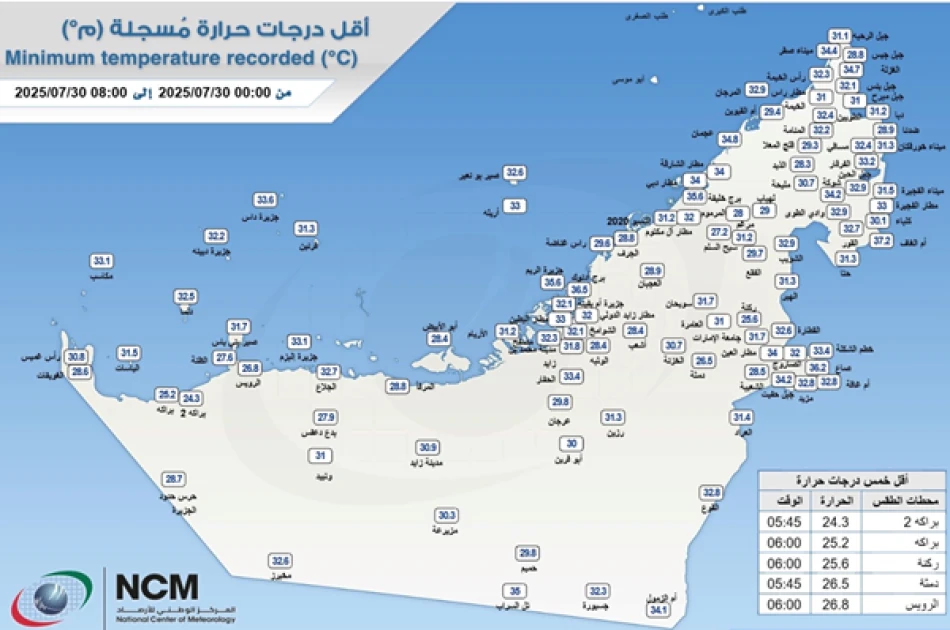
UAE Experiences Lowest Temperature at 24.3°C: Brace for Winter Chill
UAE Records Remarkably High Minimum Temperature of 24.3°C, Signaling Intensifying Heat Patterns
The United Arab Emirates recorded its lowest temperature of 24.3°C (75.7°F) early Wednesday morning in the Barakah area of Al Dhafra region, highlighting the country's increasingly challenging climate conditions. This unusually high minimum temperature underscores the Gulf nation's position at the forefront of global warming impacts and raises questions about long-term sustainability strategies in one of the world's hottest regions.
Temperature Records Reflect Regional Climate Crisis
The National Center of Meteorology reported that the minimum temperature was recorded at 5:45 AM local time at the Barakah 2 monitoring station in Al Dhafra region. For context, this "coolest" temperature of the day exceeds what many temperate countries experience as comfortable room temperature, illustrating the extreme heat conditions that have become normalized in the Arabian Peninsula.
The Barakah area, located in the western region of Abu Dhabi emirate, is home to the UAE's nuclear power plant and represents a strategic industrial zone. The temperature reading from this location carries particular significance given the infrastructure investments and industrial operations that must function under these extreme conditions.
Broader Implications for Gulf States
Energy Consumption and Economic Impact
Such high minimum temperatures translate directly into massive energy demands for cooling systems across residential, commercial, and industrial sectors. The UAE's electricity consumption typically peaks during summer months, with air conditioning accounting for up to 70% of total power usage. When nighttime temperatures fail to drop significantly below 25°C, buildings retain heat throughout the night, creating sustained cooling demands that strain power grids and increase operational costs.
Regional Climate Patterns
This temperature reading aligns with broader climate trends across the Gulf Cooperation Council states, where minimum temperatures have been steadily rising over the past decade. Saudi Arabia, Kuwait, and Qatar have reported similar patterns, with some locations experiencing minimum temperatures exceeding 30°C during peak summer periods. The phenomenon reflects the urban heat island effect combined with global warming impacts, creating a feedback loop that intensifies regional heating.
Strategic Response and Adaptation Measures
The UAE's approach to managing extreme heat conditions has become a model for other Gulf states. The country has invested heavily in renewable energy projects, including the world's largest single-site solar park, partly to offset the massive energy demands created by cooling requirements. Additionally, urban planning initiatives now incorporate heat mitigation strategies, including reflective building materials and expanded green spaces.
The timing of this temperature reading, occurring in what would traditionally be considered a cooler morning hour, suggests that the UAE's climate adaptation strategies will need continuous refinement. As minimum temperatures continue to rise, the country's ambitious economic diversification plans, including outdoor tourism and agricultural initiatives, face increasing environmental constraints that require innovative technological solutions.
Most Viewed News

 Layla Al Mansoori
Layla Al Mansoori






